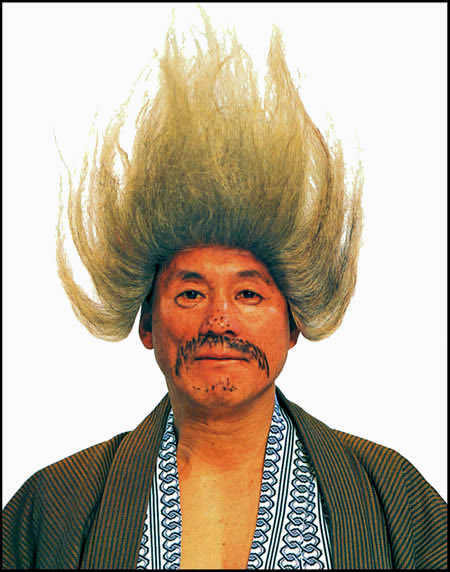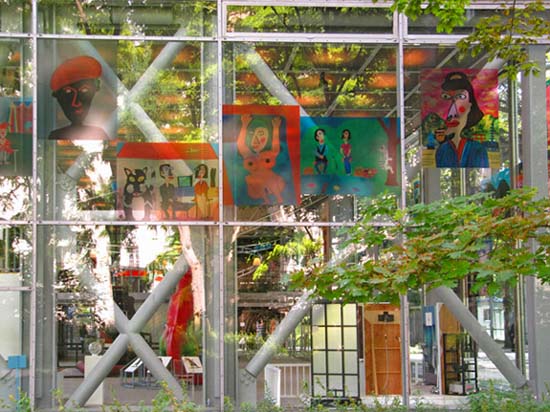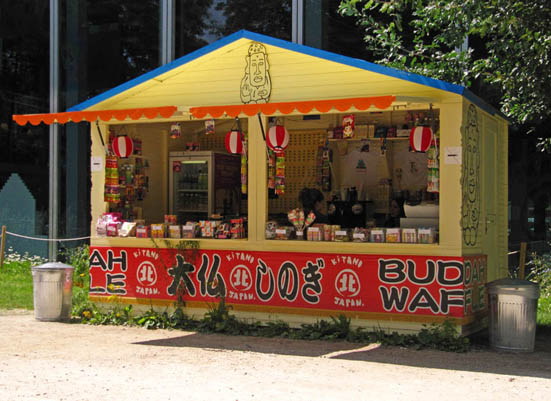Takeshi Kitano
Hero: 'Beat' Takeshi Kitano
01/01/2011
Comedian, actor, director, writer, painter and prolific TV personality, Takeshi Kitano has done it all, and done it with aplomb.
Takashi Kitano was born into a working-class family, the son of a house painter, growing up in the Asakusa district in Tokyo. After school, he studied engineering, but lost interest and dropped out. He eventually became a comedian, part of a Manzai double act 'The two beat' (below), under the name "Beat" Takeshi with his friend "Beat" Kiyoshi.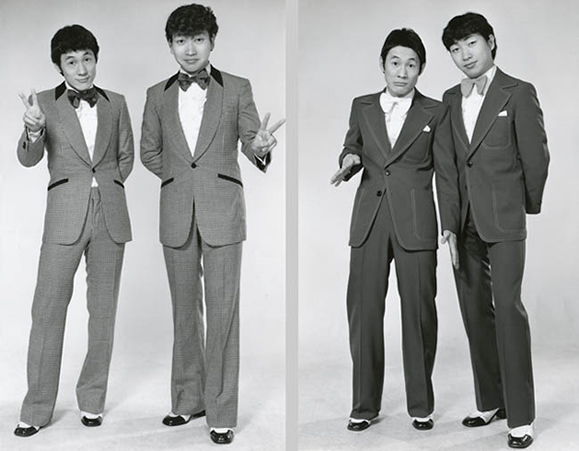
My first contact with anything Kitano-related was Violent Cop. 'Beat' Takeshi (his performing nom de guerre) had been in films before Violent Cop (Merry Christmas Mr. Lawrence & Yasha), but strictly as an actor. Violent Cop was supposed to be directed by legendary director Kinji Fukasaku, but he fell ill. Kitano took over the directorship of the film, and the rest is history.
In the 1980s, Kitano was already incredibly famous, but only in his native Japan and mostly for his Television work. Violent Cop made him known to people in the West, especially as Tarantino's Reservoir Dogs had exploded onto screens in 1992. As I recall, Violent Cop was released in the UK in 1993 (it was actually released in Japan in 1989) and marketed as a Japanese Dirty Harry flick. Tarantino was 90s chic, making violence 'cool', whilst at the same time carved out a burgeoning market for bloody films with scenes of over-the-top violence. Violent Cop however, was clearly very different... it was much more understated, much more real rather than self-conscious violence. Also, the Eric Satie-based score made the film even more unique.
From here on in, Kitano was on a roll. Mixing a slow pace and lingering shots interspersed with scenes of shocking violence, Kitano's next flicks were all Yakuza-based. 3-4 x jûgatsu aka Boiling Point and Sonatine are both excellent. Kitano also made some non-Yakuza dramas, none of which were available for a looong time in the West. (Remember, kids: violence sells). A Scene at the sea in 1991 is a story about a mute boy who wants to learn to surf, and Getting Any? is what I call a 'Ba Ka' (stupid) film about a guy trying to get laid. The latter was such a disaster that it led to an apparent suicide attempt, whereby Kitano crashed a motorcycle without wearing a helmet. This near-death experience led to Kitano having a renewed outlook on life. He made the drama Kids Return in 1996, which is about two friends who finish school and go their separate ways: one attempting to become a boxer, and one entering into the Yakuza.
It was also around the time after his 'accident' that he started painting. Many of his artworks of that period are included in Kitano's 1997 masterpiece Hana-Bi. Hana-Bi tells the story of Nishi (Kitano), a, erm, violent cop who is forced to quit. He gets a huge loan from the Yakuza and decides to spend some time with his wife, who is dying of leukaemia. Hana-Bi has the almost-trademark splashes of violence and deadpan humour that established Kitano's reputation as a truly idiosyncratic director, but there's a bigger heart in Hana-Bi than in his earlier films, not in any syrup-sweet American way, but in amore moving, realistic manner.
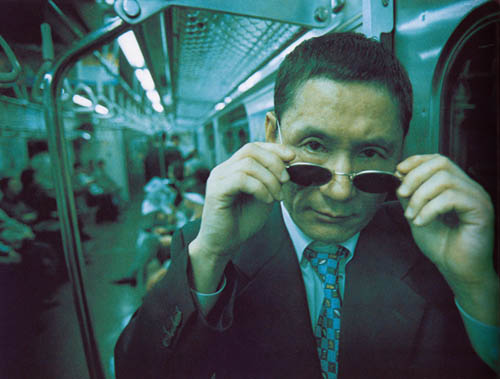
In 1999 Kitano directed Kikujiro, a very funny tale of a former Yakuza gambler/bum, who is forced by his wife to take a summer trip with an 8 year-old boy who wants to find his mother. Kikujiro finds Kitano at his most playful, setting up a series of increasingly bizarre scenes, some of which are with his old pals from Takeshi's Castle: Gureto Gidayu as 'Fatso' & Rakkyo Ide as 'Baldy'. Cue Japanese silliness!
The following year saw Kitano make Brother, an American-set Yakuza drama, which is nothing more than a re-hash of his far superior Japanese productions. The same year (2000), he starred in Kinji Fukasaku's operatic Battle Royale, a personal favourite here at WWG central!
2002 saw Dolls, a touching triptych of stories with limited dialogue and glorious visuals. Most people were disappointed by Dolls, but I really enjoyed it. The following year saw his rather distinct version of Zatoichi, a gloriously entertaining period romp concerning a blind masseur/swordsman. Excellent action scenes, digitised blood and Kitano's new white hair made this a big success. It couldn't be more different to Dolls.
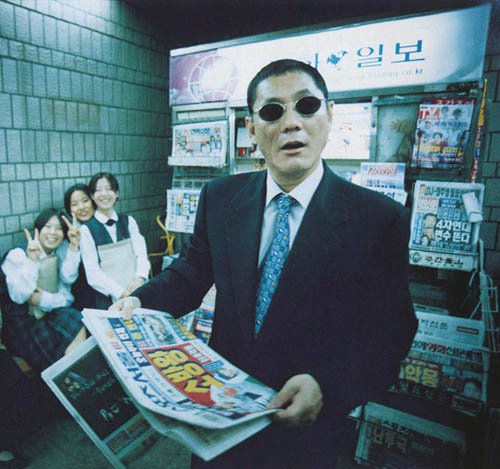
Next came what I refer to as his 'Ba Ka' trilogy, where Kitano entered into filmic self-indulgences in the style of, but not exactly similar to Getting Any? Takeshis in 2005, Kantoku Banzai! in 2007, and Achilles and the Tortoise in 2008 are all entertaining films in a very silly "Beat" Takeshi way. Sadly, all three were largely ignored by distributors in the West. A talent of Kitano's stature cannot be ignored, yet that is exactly what happened with these three films: Takeshis took FIVE years to be released on DVD in the UK, and as far as I'm aware the other two are only available in Asia. Actually, I know the French released them, because they give a shit. In fact, the French care so much, that in March 2010, Kitano was awarded the prestigious Ordre des Arts et des Lettres (Commander of the Order of the Arts and Letters), and had an excellent exhibition Beat Takeshi Kitano : Gosse de peintre ('The painter's kid') at la Fondation Cartier pour l'Art Contemporain as well as a film retrospective at the Pompidou centre. All this, and a new Yakuza flick Outrage made 2010 Takeshi's year. Salut, Kitano-san!
Beat Takeshi Kitano : Gosse De Peintre (The Painter's Kid)
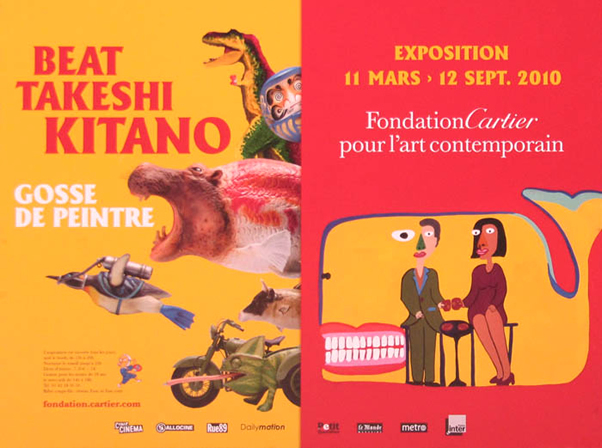
Apparently, it took five whole years for the Fondation Cartier pour l'art contemporain's general director Hervé Chandès, to get Kitano to exhibit in Paris. It was certainly worth the wait.
On the first floor of the venue were pieces made especially for the exhibition. A very funny part of the installation was "The first Japanese criminal to survive execution by hanging', which entailed slapstick & absurd approaches to avoiding the drop. Other highlights were dinosaurs using a lavatory in the correct manner (toilet humour?) which reminded me of Gary Larson's Far Side. Animals merged with weaponary and animals merged with fish were also on show (elephant-goldfish for example).
BELOW: The exterior of Fondation Cartier pour l'Art Contemporain. (No cameras are allowed inside... Well, they are, just as long as they're not switched on, like!)
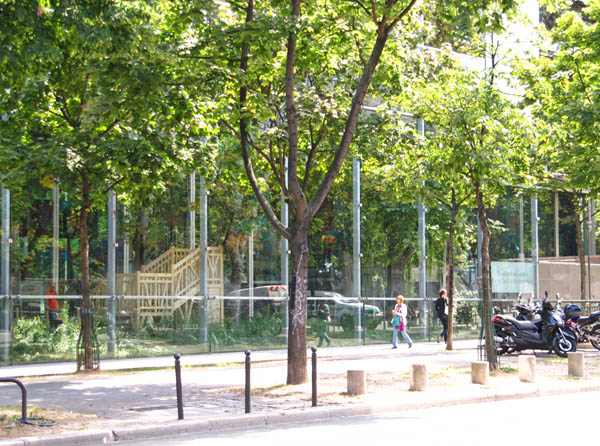
Downstairs were drawings & paintings by Kitano mostly from 1996 to the present. The pieces included in his film Hana-Bi were on show, and there was also a video room showing some of Kitano's well-known TV antics, especially Owarai Ultra quiz and, of course, the world famous "Fu-un! Takeshi-jo" (Takeshi castle). One clip in particular stayed in my mind, which had Takeshi dumping a coach full of Japanese men into the water by a dock. As the coach slowly sank, cameras installed in the coach filmed the panic & chaos going on inside. Takeshi meanwhile, was dressed as a chicken standing on the dock, cackling like a maniacal wizard. Magic. Kitano's playful sense of humour was clearly on show, as well as his sense of the absurd, a highly-evolved yet peculiar sense of eccentricity. The exhibition as a whole was very slick and very well-produced.
ABOVE: A waffle house with a, erm, Kitano theme, which sold Japanese sweets and that.
BELOW: Some examples of Kitano's slightly odd sense of humour. Note that these pictures were not part of the exhibition in Paris.
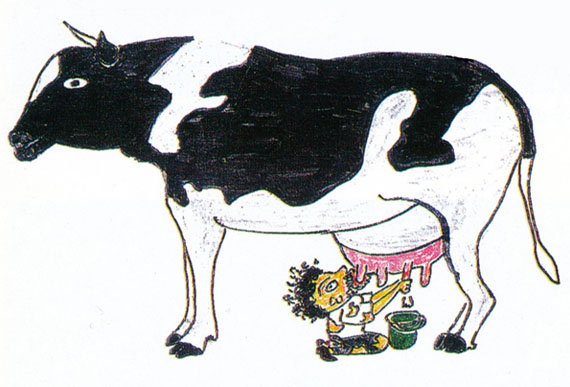
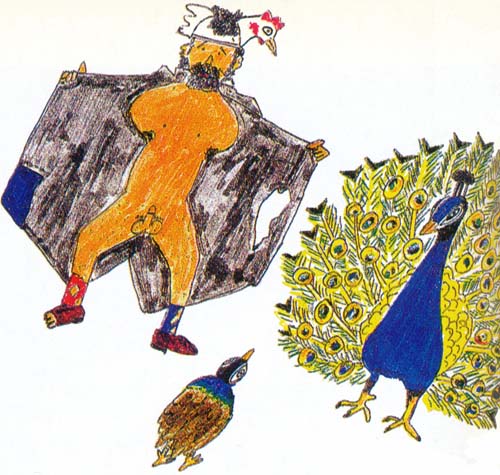
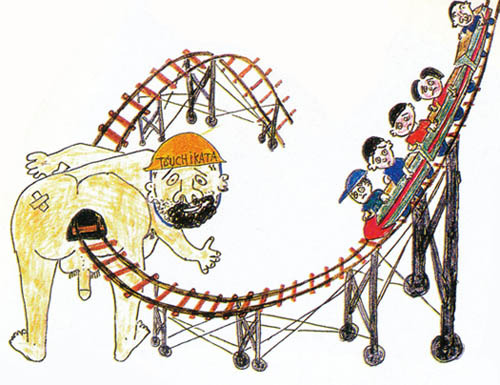
ABOVE: What I like best about this picture is that all the kids are unhappy, yet Kitano himself (on the last cart) appears to be very happy!
Reviews: Yasha | Hana-Bi | Outrage | Outrage Beyond

Heroes & Villains Archive pages
![]() Anna Karina: The Darling of the Nouvelle Vague
Anna Karina: The Darling of the Nouvelle Vague
